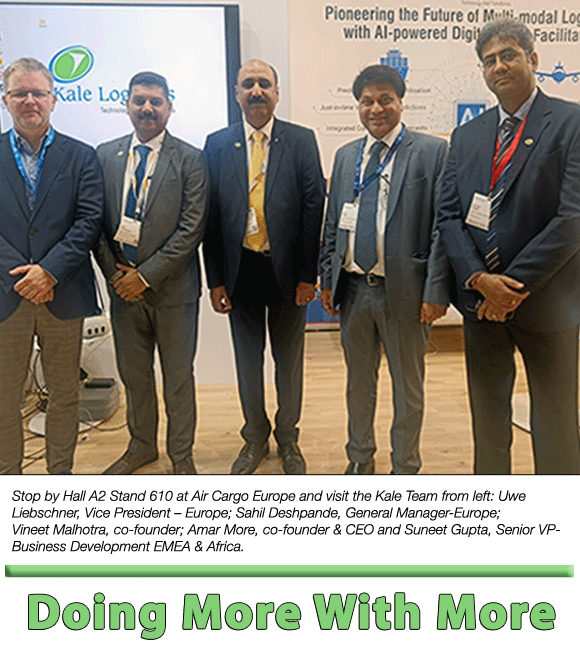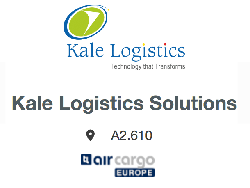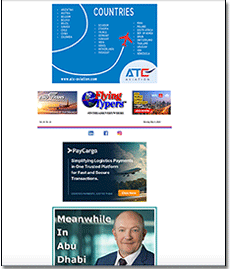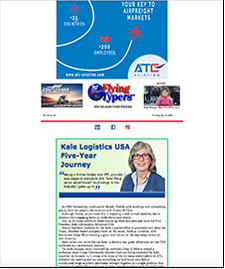 |
In particular, but not exclusively, in Europe we have spent a number of years burdened by the expectation of “doing more with less”. This was our politicians’ abstraction taken from a famous Ludwig Mies Van de Rohe’s statement, made within the architectural milieu in the beginning of last century. Buckminster Fuller had also complemented this concept in 1938 by theorizing the use of technology to reduce the most labour intensive activities.
In this day and age, this evident oxymoron has been polished and repurposed by our political leaders to try to justify the resource penury with which their governments were reduced to suffer, after decades’ promises to “reduce taxes”. Whether in the end we pay less and get more is an open question that we leave for our readers to answer, according to their perception in their local environment. Locally my impression is that I spend exactly as I did before and get much less in return for the same money, but . . . Let us not get old and bitter. L. Cohen observed in one of his masterpieces that it was time to sing another song, boys . . . the song giving us more, perhaps?
The peculiar catchphrase come to mind while thinking of one of our regular readers and contributors. At FT we have the privilege of a long-lasting and meaningful relationship with a person who was born with a surname that indeed represents the antinomy of the ‘doing more with less’ concept, and for good reasons. His name is Amar More and his performances and services represent the very concept of “more” in the purest sense of the word: better, bigger success, greater results, higher expectations and we could continue . . .
We also ventured into the terra incognita of personal comments with our friend Amar and asked him a couple of questions in this regard: “What city in the world have you not visited, but want to at some point and why? Amar’s reply was most surprising and captivating at the same time, in particular if you think we are talking to a person who was born in India. “Tromso, Norway. It is the gateway to the arctic and one gets to see the miraculous Northern Lights from there,” was his unconventional reply.
Delving deeper in the personality inventory: “What is your favourite movie?” we enquired. Here came Amar’s resolute reply: “There are several Indian movies I love, but the two favourite Hollywood movies are ‘The Shawshank Redemption’ and ‘The pursuit of happiness’ in that order.”
If you saw both films, you realize that both have a common trait: a complex plot where the ability to emerge as the winner against the most daunting adversities is the paramount virtue of the human being, the only one that in the end can ensure accomplishment and possibly happiness, against all odds.
We utilized these two answers to give you an idea of the level of originality and commitment that emerges from dealing with a person like Amar and his company, Kale Logistics Solutions. Here is what Amar had to say as recently as a couple of days ago when discussing his objectives for ACE in Munich: “At Kale we continue to build the momentum in connecting the global logistics community across different modes of transport which is our vision. Whilst we maintain our global leadership in airport cargo community systems, our maritime cargo community systems and maritime single window systems continue to expand globally. We are now working closely with the BCOs in creating Logistics Customs and Control Towers. We have also started working on automation of land border ports.
“We have made Artificial Intelligence as our strategic pillar and our Chief AI Officer continues to drive the implementation of our A.I. strategy both for our internal usage as well as for our customers. We are working with leading air cargo and maritime companies on implementation of A.I. use cases and this goes far beyond the show pony syndrome.
“Our work on connecting communities across geographies has begun and this doesn’t mean both ends should have Kale’s community systems. e-Commerce is a major focus area for us now. We are working with our GHA, airlines and forwarder customers deal with changing regulations and unique requirements of this business.
“In a nutshell complementing our core business of creating airport, port and inland port communities, we are helping our customers in compliance with changing regulations, dealing with the changing landscape of e-commerce, working with the importers and exporters in creating Logistics Customs Control Towers and help our community in meaning fully implementing AI.”
This is not the first time that this simplification oriented trait surfaces in Amar More’s interactions with Flying Typers. There are other notable statements, which we quote hereunder for the benefit of our readers.
 In February 2024, this was topping the list of subjects FT delved into with Amar More: We come from a history of hopes for national and/or international cargo community platforms both in air freight and in ocean cargo. In the meantime, some remarkable examples have been created and we register Kale’s important contribution in this direction, but . . . There is no universal solution and we still cannot see last century’s dreams come to fruition across global supply chains. Instead of dreaming, Kale has worked very hard in the last few years and managed to provide effective solutions in a growing number of countries. Is your recipe based on the adoption of common standards (which? e.g. IATA’s, WCO’s, UNCEFACT’s etc.) or a hybrid, more flexible approach? In February 2024, this was topping the list of subjects FT delved into with Amar More: We come from a history of hopes for national and/or international cargo community platforms both in air freight and in ocean cargo. In the meantime, some remarkable examples have been created and we register Kale’s important contribution in this direction, but . . . There is no universal solution and we still cannot see last century’s dreams come to fruition across global supply chains. Instead of dreaming, Kale has worked very hard in the last few years and managed to provide effective solutions in a growing number of countries. Is your recipe based on the adoption of common standards (which? e.g. IATA’s, WCO’s, UNCEFACT’s etc.) or a hybrid, more flexible approach?
Amar replied by observing that “connecting a community through digital becomes easier if the platforms support the common industry standards. If you want to make it simple for the stakeholders to connect with the other supply chain partners, then you have to minimize the changes they would need to do to their internal systems. Most systems in the industry support the UNCEFACT, WCO, IATA standards and our platform is perfectly capable of accepting as well as sending electronic data to different stakeholder systems. However, there are still a lot of areas where the proliferation of standards doesn’t exist (e.g. terminal charges payments information flowing from the handler’s systems into the forwarder’s system) and in those places we had to create simple APIs to facilitate data exchanges. We realized very early in our lifecycle that to be effective in community creation and adoption we need to simplify and simplify. That is the only recipe. So the stakeholders today can benefit from our approach by using simple APIs, industry standard EDI messages, simple excel sheet uploads, using portals if they prefer that method and finally innovations such as .pdf to EDI converters wherein the SME forwarders just send or upload simple .pdf files on our platform and using Optical Character Recognition (OCR) and Machine Learning (ML), we convert those into electronic data that can be processed through the platform.”
Amar More concluded his comment with an important observation: “The connectivity between exporter/importer and forwarder is still an underserved area and we have that functionality in our platform to facilitate this important digitization.”
About four months later at CLEARWIEW Americas Donna Mullins, VP Kale Information Solutions USA, reflected on the same concept from another viewpoint and stated that “Regulations and recommendations also drive development, processes, and procedures: there are 49 U.S. government agencies that have authority to hold, release, or seize cargo. Cargo buildings must be able to house cargo and make it available for examination and inspection. There are also agencies like DOA, FAA, DOT, FTA that affect how the building is laid out, how and when the planes land, how trucks, and workers get to the cargo facility, as well as how certain type of cargo must be segregated and sorted while in the cargo facility. Agencies like CBP, TSA, BIS, FDA, USDA and a host of others must have enough room to screen and examine cargo. The AfA and NCBFAA took on an interest in air cargo delays and airport congestion to the extent that a 40-member committee was created to identify deficiencies in the air cargo supply chain causing cargo delays and airport congestion. There was a survey within the U.S. air cargo community with over 300 replies: the top five focused areas were, in order, Technology and Automation; Service Standard; Airport Facilities and Infrastructure; Staffing and Hours of Operation; Regulatory Agencies and Paperwork.”
A fundamental point on which both eminent representatives of Kale Logistics Solutions, in their decency, are less vocal is indeed one that in our opinion is worth mentioning, in particular if we try to conciliate the heavy burden of requirements and the necessity to contain costs: for years now, Kale Logistics Solutions was appreciated as a viable, existing and implementable support for forwarders, airlines and ground service providers of all kinds, able to simplify requirements and contain costs without disrupting the routine of events that the logistics air cargo machine requires to run effortlessly.
Their solutions do not promise to slash billions of dollars, but actually deliver on their promises. This has become a rare bird today, a period when we seem to get accustomed to rejoice with promises that never come to fruition.
In this sense let me confirm: doing more with More will come to a substantial and often unexpected saving for your business. Doing more with less is impossible, but doing more with More is a good investment. This is surely not the word of wisdom for the Corinthians, just good advice perhaps. Up to you to give it a try in Munich right now in Hall A, Stand 610.
Marco Sorgetti
|





